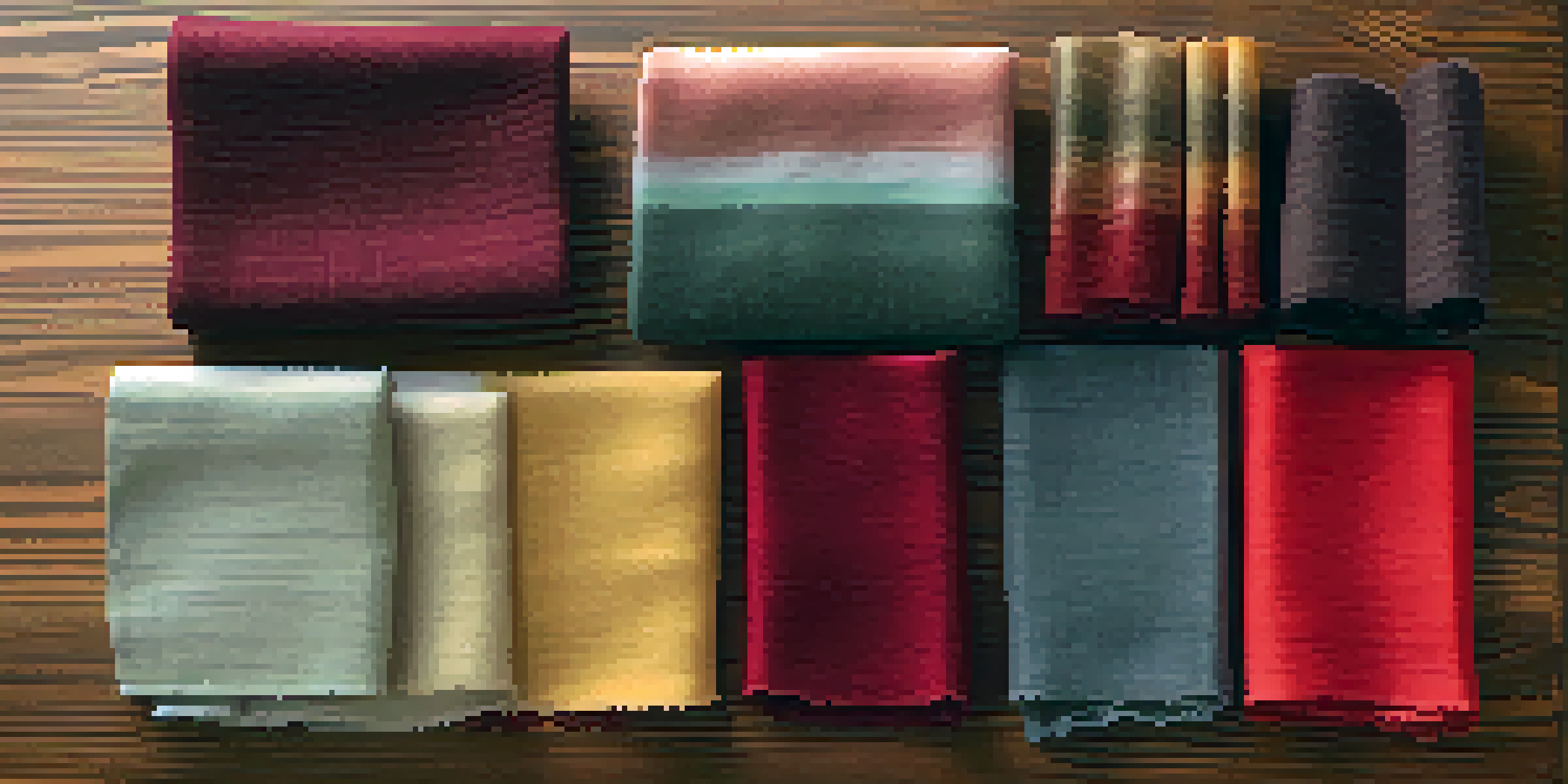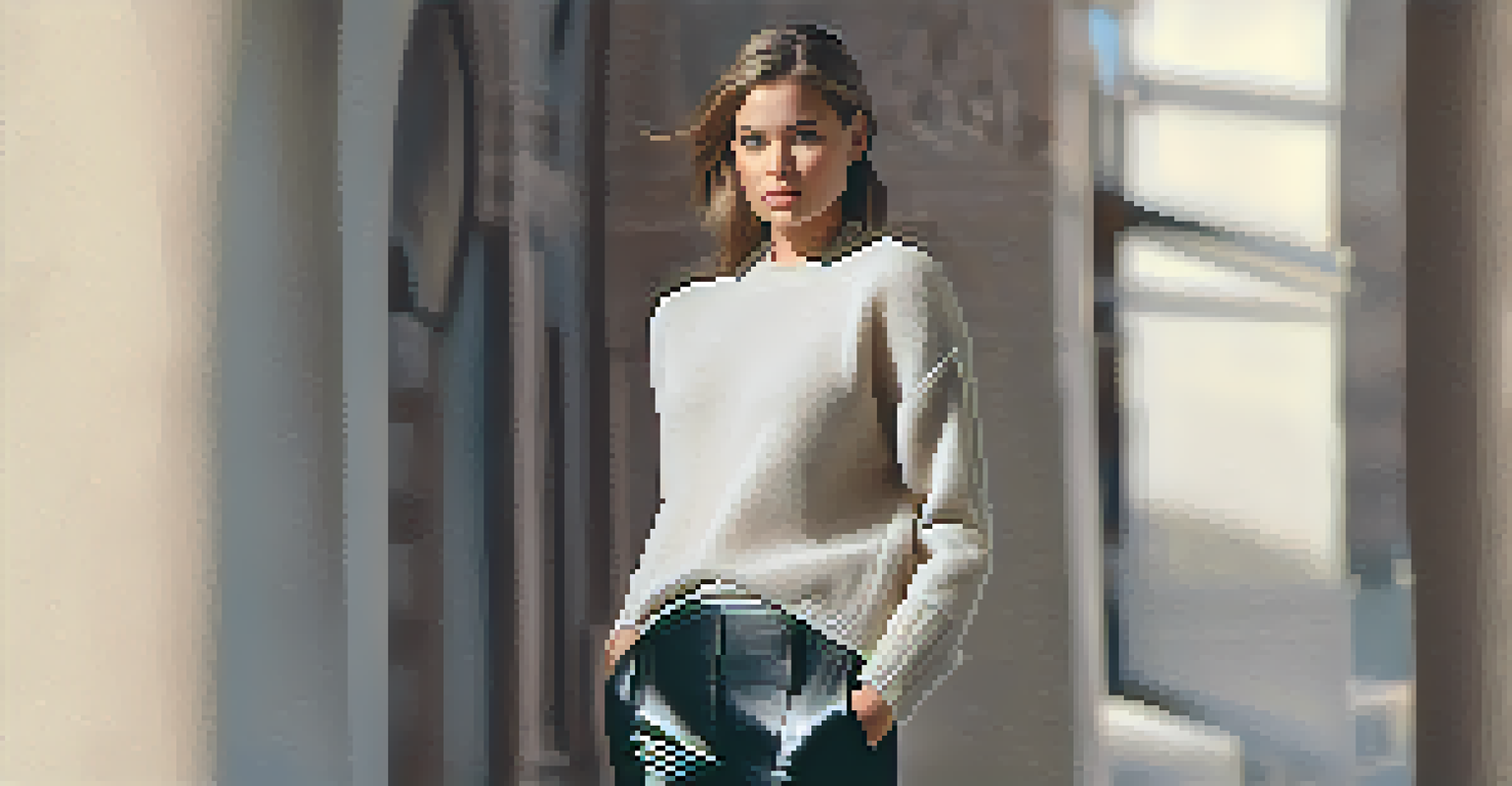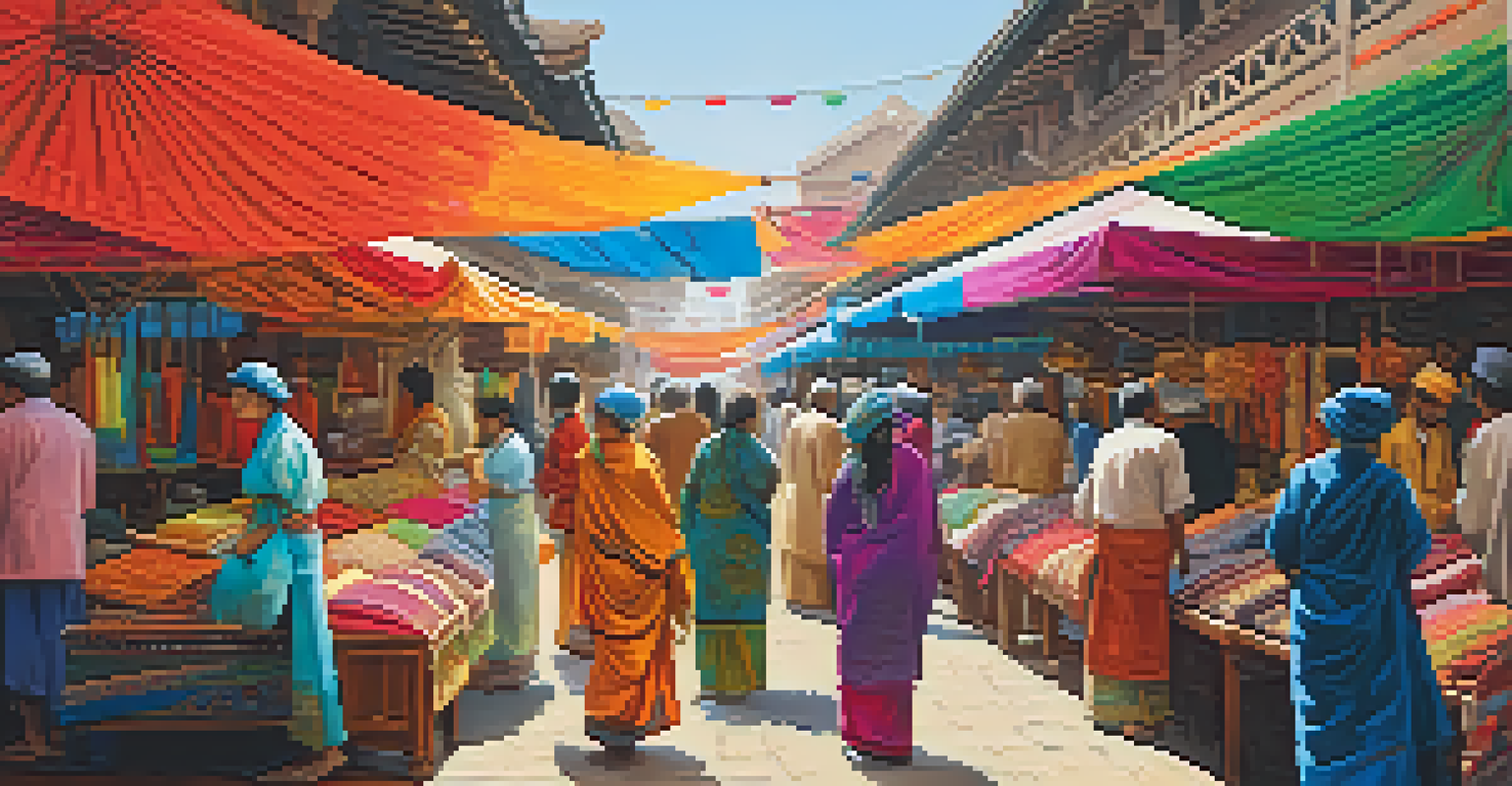The Role of Fabric and Texture in Personal Style Choices

Understanding Fabric: The Foundation of Fashion Choices
Fabric is the backbone of any outfit, dictating not just its look but also how it feels against your skin. Different materials like cotton, silk, and wool each bring unique qualities to your wardrobe, influencing comfort and style. For instance, while cotton is breathable and casual, silk offers a luxurious sheen that elevates any ensemble. Choosing the right fabric can transform your outfit from ordinary to extraordinary.
Fashion is the armor to survive the reality of everyday life.
When selecting fabric, consider the occasion and climate. Lightweight fabrics like linen are perfect for summer outings, while heavier options like flannel can keep you cozy during winter. By understanding the properties of various fabrics, you can make informed choices that align with your lifestyle and preferences. Ultimately, the right fabric adds depth and dimension to your personal style.
Moreover, the feel of the fabric can significantly impact your confidence. Wearing something that feels good against your skin can boost your mood and self-esteem. Think of fabric as not just a visual element, but also a tactile experience that enhances your overall style narrative.
Texture: Adding Depth to Your Wardrobe Choices
Texture plays a crucial role in fashion, adding visual interest and complexity to even the simplest outfits. Smooth, shiny fabrics like satin can create a sleek look, while textured materials like boucle or denim can add a touch of personality. Mixing textures can be a creative way to express your individuality and make a statement with your style choices.

For example, pairing a soft cashmere sweater with structured leather pants can create an appealing contrast that draws the eye. This interplay between different textures adds a layer of depth to your outfit, making it more engaging. The right combination can turn heads and spark conversations, showcasing your unique fashion sense.
Fabric Shapes Your Style Choices
The right fabric can elevate your outfit by influencing both its appearance and your comfort.
Additionally, texture can evoke different feelings and moods. A chunky knit can feel warm and inviting, while a crisp cotton can convey freshness and cleanliness. By understanding how to play with texture, you can curate outfits that not only look great but also resonate with who you are.
Color and Fabric: A Harmonious Relationship
The relationship between color and fabric is essential in crafting your personal style. Different fabrics can alter how colors appear; for instance, a vibrant red may look softer on a cotton blouse than on a satin dress. This can influence your choice of fabric based on the mood you want to convey with your color palette.
The joy of dressing is an art.
When selecting colors, consider how they interact with the fabric's texture. A matte finish may absorb colors differently than a glossy one, potentially changing your outfit's overall aesthetic. Pairing a vivid color with a textured fabric can create a striking visual effect, making your outfit stand out in a crowd.
Ultimately, the goal is to find a balance that feels true to you. By experimenting with various colors and fabrics, you can discover combinations that reflect your personality and enhance your confidence. This exploration can lead to a wardrobe that feels not only stylish but also authentically you.
The Impact of Cultural Influences on Fabric Choices
Cultural influences play a significant role in shaping our fabric preferences and style choices. Different cultures have distinct fabric traditions, from Japanese silk kimonos to Indian cotton saris, each telling a story through their unique materials and patterns. Understanding these cultural contexts can enrich your personal style and connect you with global fashion narratives.
Moreover, as fashion continues to evolve, there's a growing appreciation for cultural textiles. Incorporating elements from various cultures into your wardrobe can create a diverse and interesting style. This not only celebrates global craftsmanship but also fosters an appreciation for the art of fashion across different backgrounds.
Texture Adds Interest to Outfits
Mixing different textures can create visual depth and express your unique fashion identity.
When choosing fabrics, consider how they reflect your heritage or the cultures that inspire you. This thoughtful approach can create a more meaningful connection to your wardrobe, making your style choices a celebration of diversity and individuality.
Sustainability in Fabric Choices: A Modern Priority
In today’s fashion landscape, sustainability has emerged as a key consideration when selecting fabrics. With the rise of eco-consciousness, many brands now offer sustainable materials, such as organic cotton, bamboo, and recycled polyester. Opting for these fabrics not only benefits the environment but also contributes to a more ethical fashion industry.
Choosing sustainable fabrics can also enhance your personal style. Many sustainable options come in unique textures and colors, allowing you to express yourself while making eco-friendly choices. This shift in perspective encourages consumers to think critically about their fabric choices and their impact on the planet.
By embracing sustainability, you can create a wardrobe that aligns with your values. This not only elevates your personal style but also sets a positive example for others, proving that fashion can be both stylish and responsible.
Accessorizing with Fabric and Texture: The Finishing Touches
Accessories can elevate your outfit, and the right fabric and texture can make all the difference. Think about how a leather handbag adds sophistication or how a knitted scarf brings warmth and coziness to your ensemble. By choosing accessories that complement your outfit's fabrics, you can create a cohesive look.
Layering different textures through accessories allows for creative expression. A silk scarf paired with a denim jacket can create a chic contrast, while a chunky knit beanie can add a playful touch to a sleek outfit. The beauty of fashion lies in the endless possibilities of mixing and matching, making accessories a vital part of your styling toolkit.
Sustainability Matters in Fashion
Choosing sustainable fabrics not only enhances personal style but also promotes ethical fashion practices.
Additionally, accessories can help you transition outfits from day to night. By swapping out a casual tote for a structured clutch or adding statement jewelry, you can change the overall vibe of your look. This versatility showcases the importance of fabric and texture in every aspect of your wardrobe.
Personal Style Evolution: Embracing Change with Fabric Choices
Personal style is not static; it evolves over time, influenced by experiences, trends, and even changes in lifestyle. As you grow, your preferences for fabric and texture may shift, reflecting your journey. Embracing this evolution is key to developing a wardrobe that truly represents who you are.
For example, a person may start with a love for bright colors and soft fabrics in their youth, then transition to a preference for neutral tones and structured materials as they enter the professional world. This adaptability allows your style to remain relevant and expressive, showcasing your growth.

Ultimately, each fabric and texture you choose tells a story about your life and experiences. By remaining open to change and experimentation, you can cultivate a personal style that not only looks great but also feels authentic and meaningful.